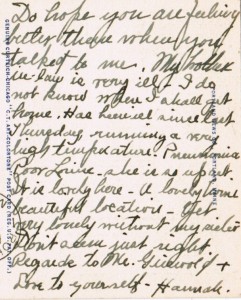As a communication aficionado I was saddened to learn that dozens of states are no longer requiring the teaching of cursive writing to elementary school students. Understandably, with limited classroom time and realistic skills needed to be taught in schools, teaching handwriting is being let go in favor of teaching keyboarding. Still it’s a sad development on many fronts. While this decision not require the teaching of cursive is unanimously popular among students – probably because they can’t read their teacher’s comments in the margins of their papers – the kids really don’t know what they’re missing.
In the not too distant future, grandmothers will write birthday cards to grandchildren who will not be able to be read them. Old documents like the Declaration of Independence will be unreadable. Who will fondly interpret old family recipes passed down through the ages? Will white boards, dry erase boards, and note paper diminish in use, or be relegated to merely drawings?
In this day and age of electronic communication handwriting has become quaintly dated. It used to be that only your doctor’s handwriting was illegible (with the potential for prescription mix-ups). And admittedly with diminishing fine motor skills, the handwriting of the elderly is hard to read. But what fun trying!
 This is from an old postcard written in 1942 – although I had a mild bit of trouble reading it, my 26-yr old daughter stumbled repeatedly trying to get through this short piece and just about gave up trying. Too much work for too little gain!
This is from an old postcard written in 1942 – although I had a mild bit of trouble reading it, my 26-yr old daughter stumbled repeatedly trying to get through this short piece and just about gave up trying. Too much work for too little gain!
Kids today just don’t have enough exposure to cursive writing to be able to tough their way through the hard stuff. The quality of handwritten thank you notes from teenagers is terrible – they are just too used to texting and are out of practice with cursive, which is debatable if they were ever in good practice in the first place. Plus the “right now” generation lacks patience to read longhand – where are the shortcuts? OMG, r u 4 real?
Typical handwriting is actually a mixture of print and cursive letters, connected together in spurts, with some letters hooked together and some not. But those linked shapes and loops connect to the brain in ways that repetitive motion of keyboarding cannot. New students to English, foreign learners, state that they learn grammar better by practicing cursive. Certainly this is true of tactile, hands-on learners. We simply retain more of what we touch with additional senses. Writing in longhand touches the 3 major senses – sight, hearing (hear the word spoken in our head as they are formed), and touch.
Fondly do I remember having such beautiful penmanship in 5th grade that I won the right (there was an actual contest!) to be one of the chosen few to pen a get well letter to a hospitalized classmate. His name and malady is long forgotten, but the pride and confidence boost that came with pretty handwriting is long remembered. To lose an avenue to boost youngsters, who can use all the avenues to boost confidence that they can get, is a shame.
With the loss of handwriting is the loss of identifying signatures. As a sign of the times, the necessity for signatures is quickly being replaced with digital signatures; by 2016 it is projected that more than half of loan closing paperwork will be done electronically. The intimidating one-inch stack of papers that embodied the serious legality of the largest investment most people make in their lives will no longer require a half hour of inked effort, when digital signature become the norm. And payment by checks is all but gone – who needs to sign anything anymore?
But losing a signature is losing a big piece of one’s identity. Our unique signature, especially the unique formation of the first letter of the first name, is an expressed statement in and of itself of who we are. Our signature communicates our character for the world to see. The problem is, this form of communication is becoming obsolete.
COMMUNICATION TAKEAWAY: Our communication methods keep evolving. Now in the digital age, cursive handwriting is one form that has greatly diminished in usage, partly due to the time it takes, partly due to the legibility, or lack of legibility of many people’s handwriting, and largely due to the electronics we have today that makes handwriting obsolete. Knowing this, we can use written notes to make a strong point, stand out with a meaningful thank you note, write a treasured letter. What was once commonplace can today become a very special way to communicate.
